CVTs Are Here; You Can Profit from Them
As CVT transmissions are appearing in our shops with increasing frequency, there still seems to be a degree of hesitance for some shops to take on these jobs. Even if shops do not want to build these units in-house, there are reliable sources for remanufactured units out there that enable them to capture profit on R&R rather than sending a customer down the road to a competitor.

Motorists May Know Something They Don’t Know
A critical part of an accurate diagnosis by the technician relies on the initial interaction between the customer and a skilled service adviser. A good adviser knows how to get details about the problem from the customer, including valuable information that the customer might otherwise feel is insignificant or unimportant. Sometimes these details are the clues that lead us to the solution. Sometimes even the best adviser still can’t get all of the details from the customer, or at least up front.
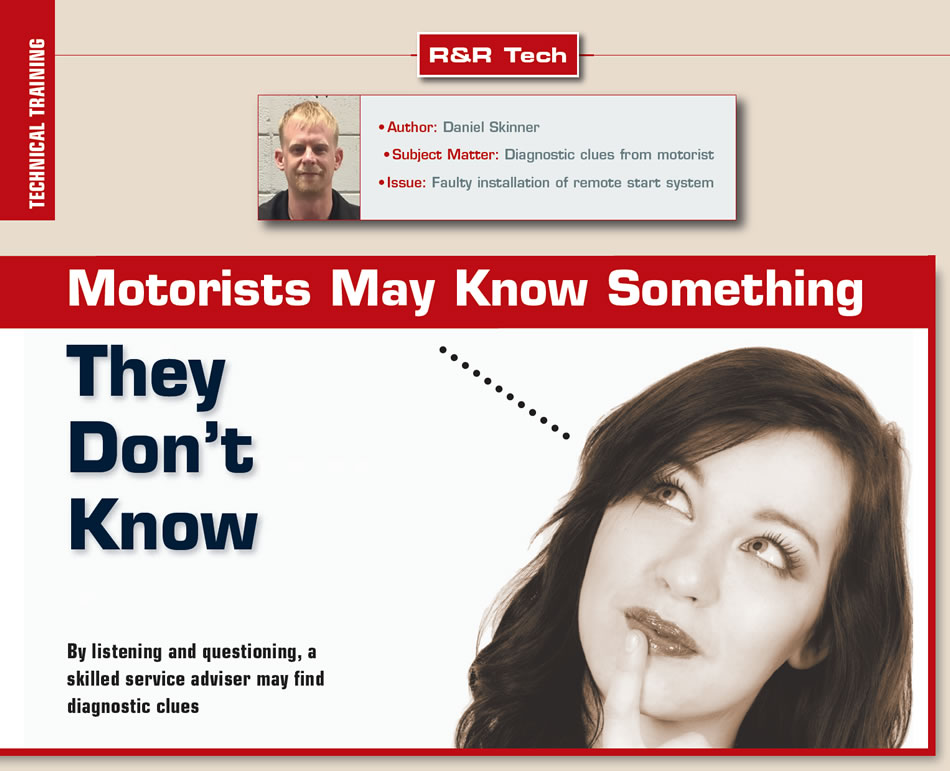
Programming Not Included
A customer recently brought his 2011 Ford F-150 into our facility after a general-repair shop (not a specialized transmission shop) had just installed a used transmission. His truck was a 4WD vehicle equipped with a 5.0L engine and 6R80 transmission. When the customer picked up the truck from the previous shop he was told that the transmission was installed and everything was fine, but it still needed to be programmed (the shop didn’t have the equipment to perform this important step).
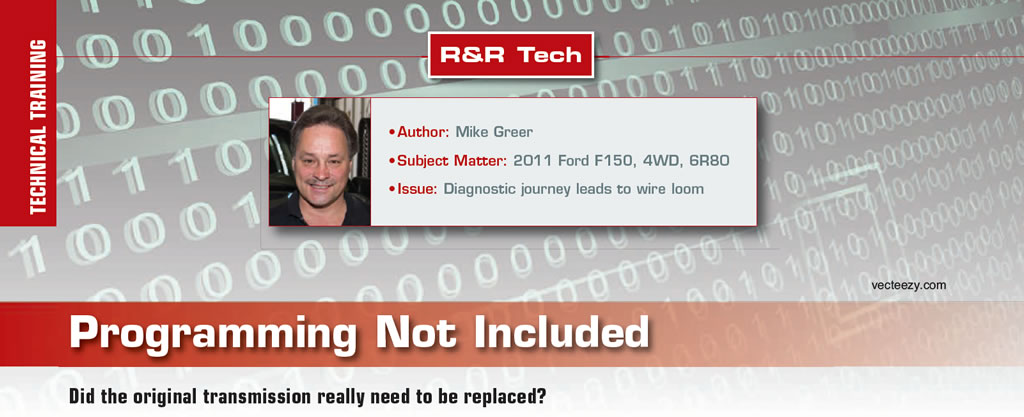
Take a Moment to Analyze What’s Going on
The service adviser transcribed the customer’s complaint as “stuck in manual mode,” and it was coming from a shop that didn’t want to work on it. After chiseling the Midwest winter ice off the vehicle I was able to go through my initial checkout. I found code P0705 stored in the PCM (Transmission Position Sensor (P R N D L) Malfunction).
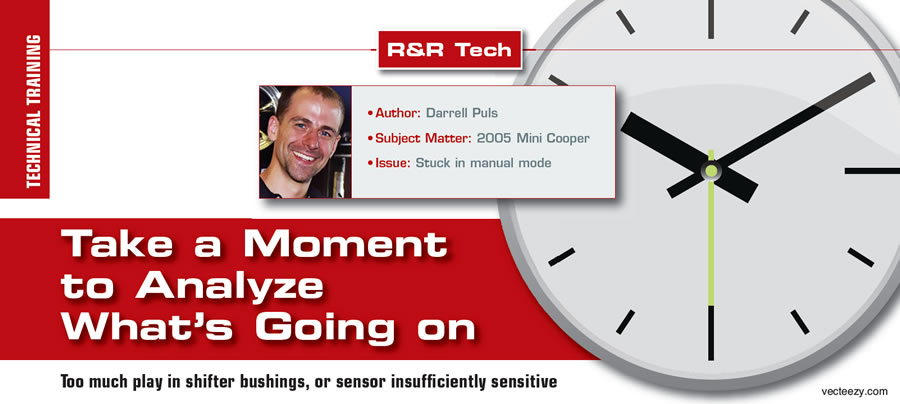
Transmission slips ‘once in a while’
Such was the case with a 2005 Dodge Dakota that rolled in to our shop equipped with 4WD, 4.7L engine, and a 545RFE transmission. Trucks like these are our bread and butter being located on the border of a big city with lots of farming and commercial operations on the other side. The customer’s complaint was “It feels like it’s slipping once in a while.”
We have a routine for our initial evaluation like everyone else: check fluid levels, scan for codes, test drive, and perform an undercar inspection. While checking fluid levels I noticed this: A new/reman PCM (Figure 1). Possibly not that it is relevant at this point, but something to make note of.
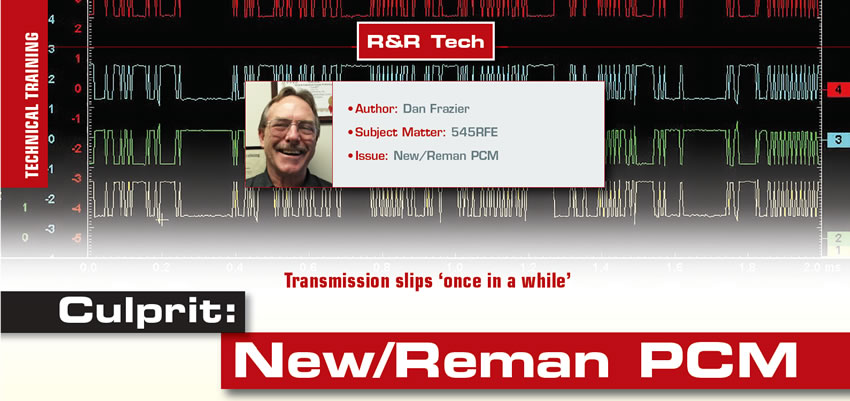
Debris, Melted Insulation Cause Two Codes to Set
About two months ago a customer brought in his 2006 Ford E350 Econoline van equipped with a 5.4L engine and a 4R75E transmission for an evaluation. His concern was that the check-engine light was on and the transmission seemed to shift hard at times. We always begin our evaluation with a battery and charging system test with a Midtronics electrical system analyzer, and we scan all modules for codes using a Snap-on Verus Pro if we are not using an OE scan tool. After a quick visual inspection of the vehicle and checking the engine oil level, we will proceed with the road-test.
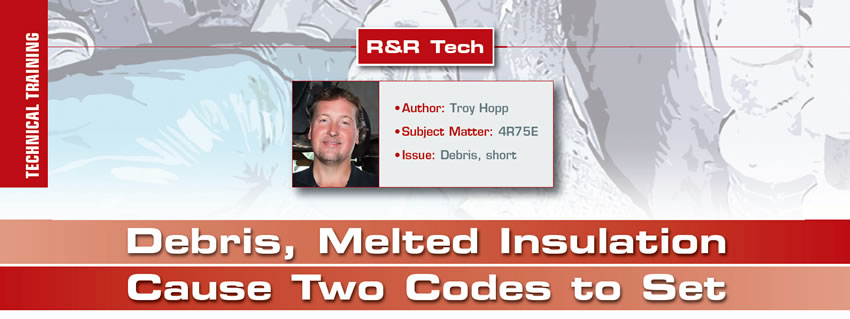
Extra Set of Eyes Saves the Day
In addition to the OEM-spec remanufactured transmissions we build, we also offer a series of heavy-duty transmissions available in three different stages. This article examines the installation of our Road Ripper™ 3000 (stage 3 unit) in a 2005 Dodge 2500 pickup equipped with a 5.9L diesel and a 618/48RE transmission. The vehicle had been in use for about a month when the customer returned with an issue that the transmission was stuck in gear and would not shift. We did not want any damage to occur by the customer driving the vehicle to our location, so we set up a tow to have the vehicle picked up.
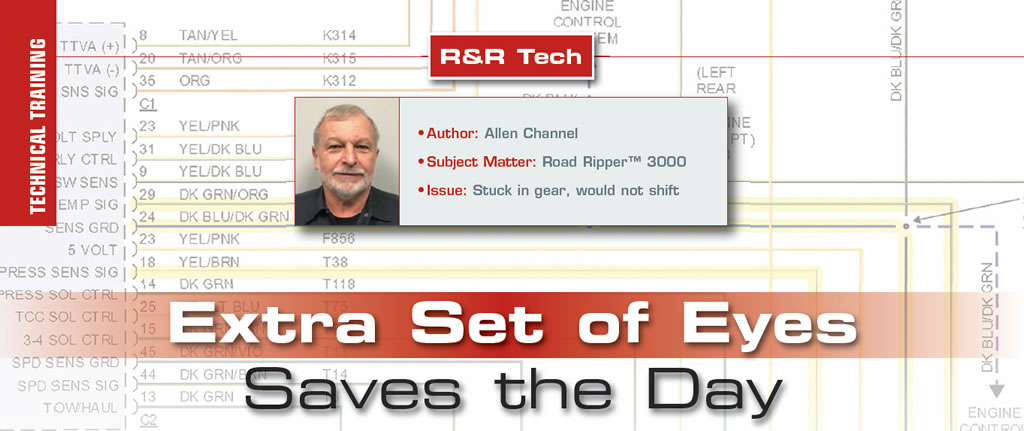
Programming Can Be a Source of Profit
For those of you who perform J2534 programming, you may have noticed that there have not been any updates to the Ford Module Programming (FMP) since the last release of FMP 105. Although it had remained functional as long as your subscription was current (or at least up until the writing of this), it won’t be long before you will have to start using the new software that is labeled as FJDS (Ford J2534 Diagnostic Software).

‘Rebuilt’ salvage-yard transmission, hmmm …
We had a local general repair shop bring us a 2014 Jeep Grand Cherokee 3.6L V-6 engine equipped with a ZF 8-speed (845RE) transmission; they had just installed a “rebuilt” transmission that was sourced from a salvage yard. The customer’s stated concern was, “The place that built the transmission just said it needed to be programmed.” Needless to say, we knew that this was going to be an adventure.

Overdrive Solenoid Déjà vu All Over Again
About a month ago a customer came into our shop with a 2008 Chrysler Town & Country equipped with a 4.0 liter V6 engine and a 62TE transmission. He was complaining that it had a whining noise, and sometimes it would not shift and seemed to stay in the same gear. When the vehicle was hooked to the scan tool it had a code for the overdrive solenoid control circuit (P0760). The fluid was at the correct level and smelled like normal fluid; however, it was dark purple indicating possible metal contamination.
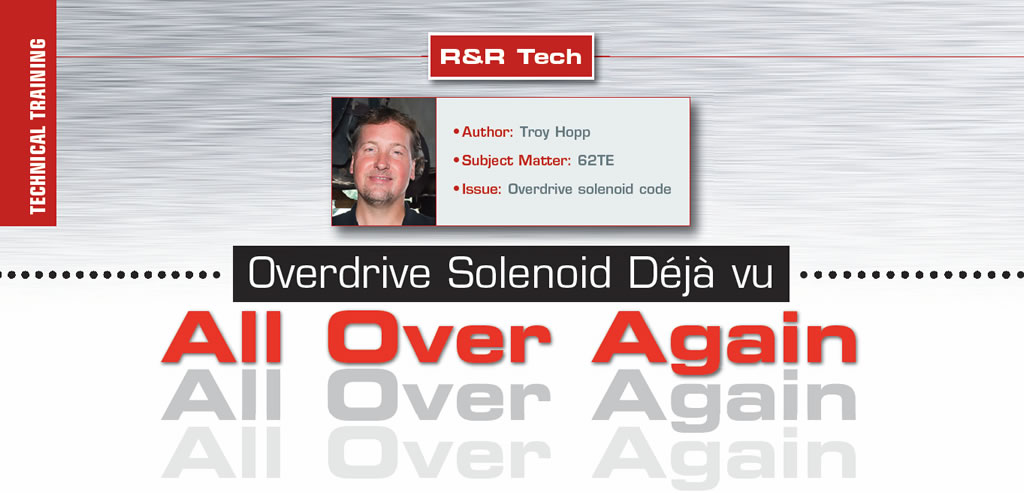
A Very Big Clutch Job for a Very Small Car
My article is going to be a little different this time, and geared more toward the R&R technician. It’s about a car that came to us from a large local dealership that has 13 different locations and works on 14 different makes of vehicles. The subject vehicle is a 2014 Mini Cooper Countryman AWD, with a six-speed manual transmission.
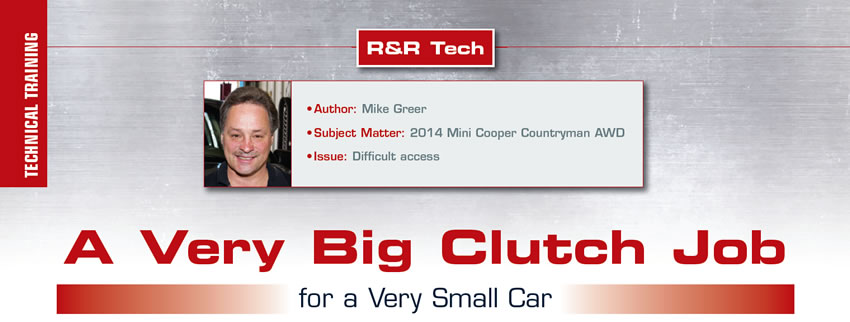
Verify What the Scan Tool is Telling You
The subject vehicle is a 1999 Chevrolet Tahoe. It came to us on a wrecker, as the customer was not comfortable driving it to us. The concern was stated as harsh shifts and a check engine light on. The vehicle was brought into the shop and the fluid level and condition were checked. The fluid level was full but the fluid had a strong burnt odor and was discolored. A quick scan of the computer revealed code P1870, “transmission component slipping.”

